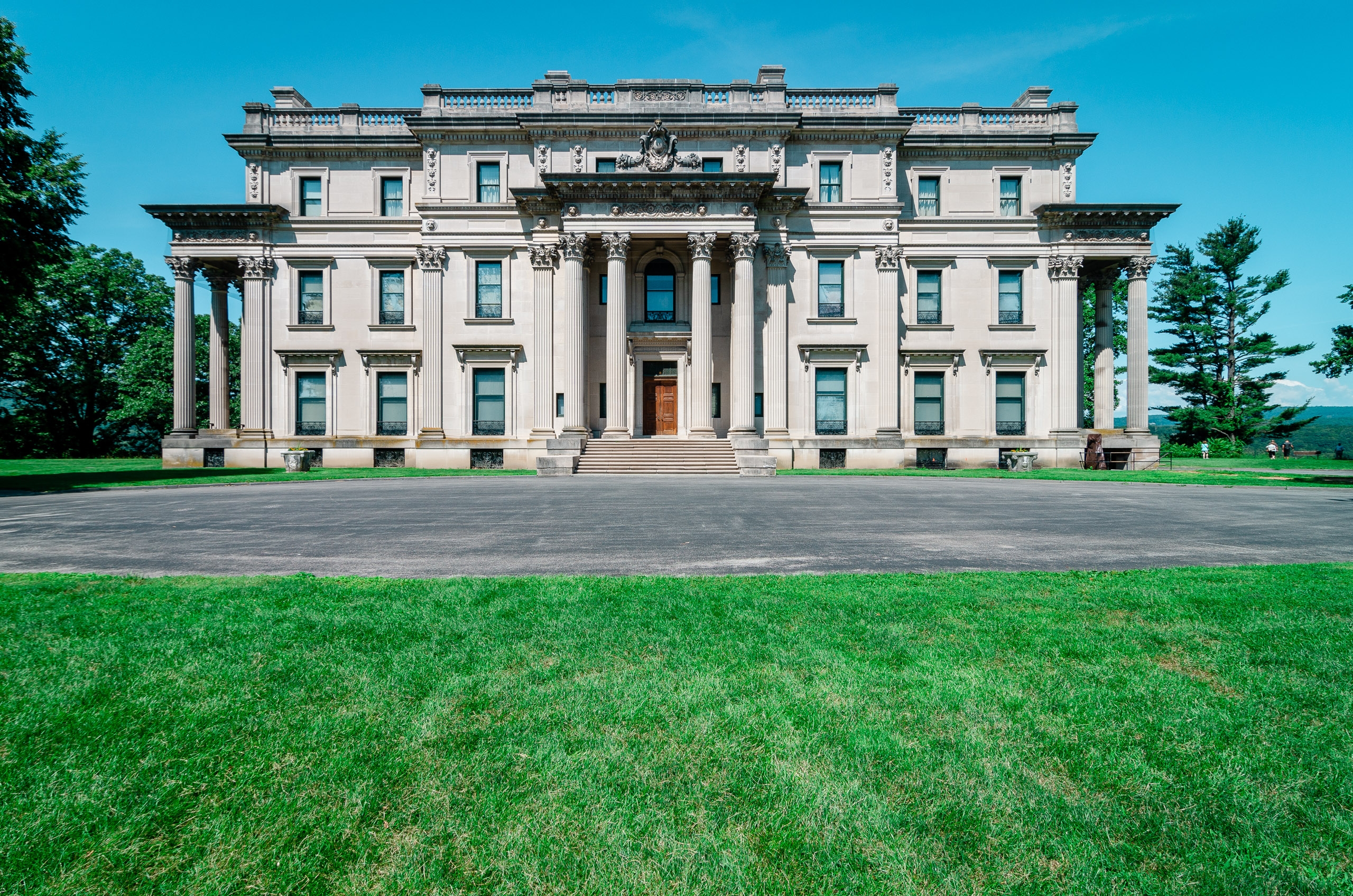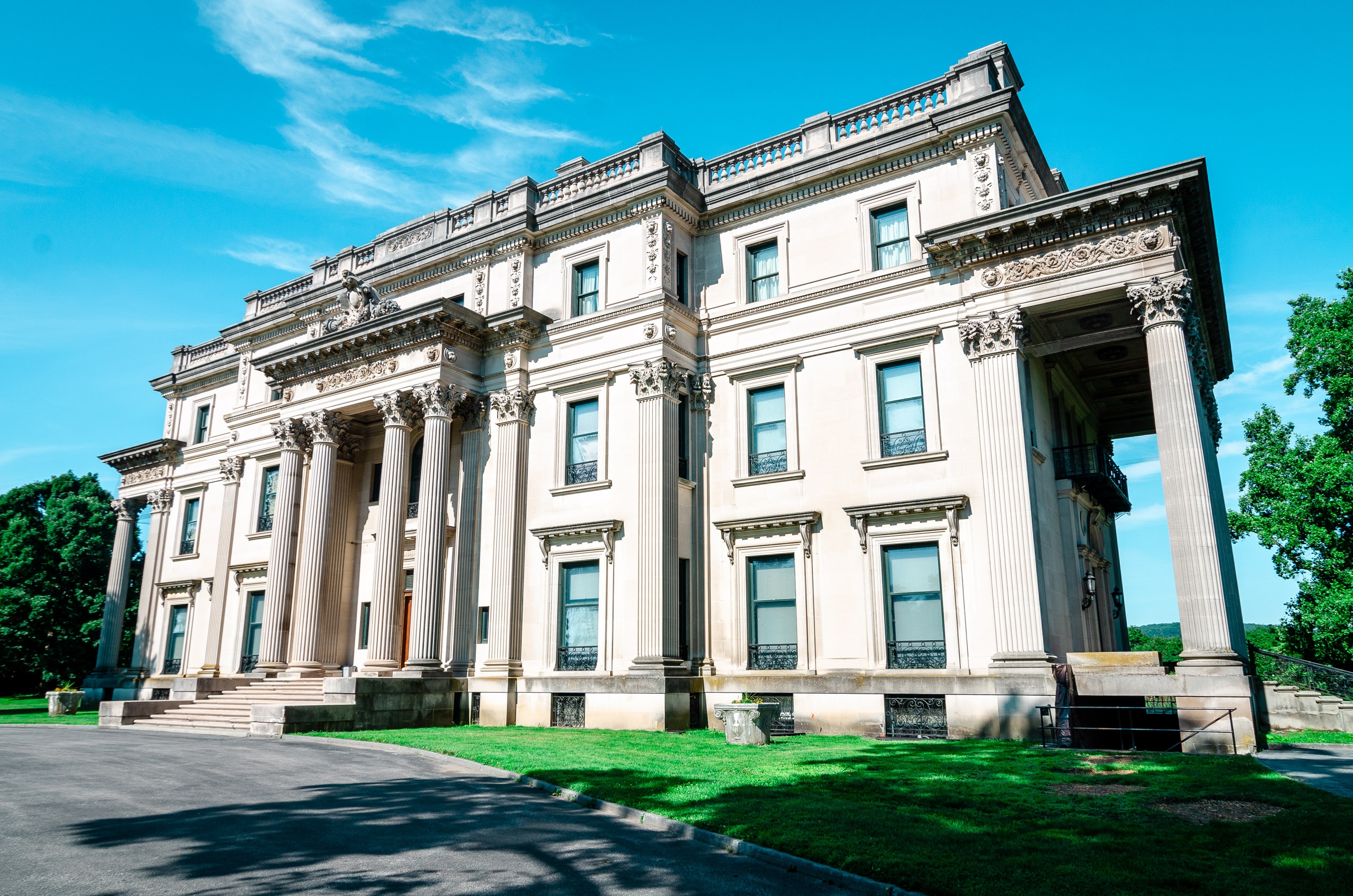Tour of the Vanderbilt Mansion
July 18, 2011
A few weeks back, Jessica and I continued our series of weekend day trips outside of New York City to visit the town of Hyde Park, New York. Hyde Park is home to many points of interest, including the home of FDR and his Presidential Library, Val-Kil, the home built and occupied by Eleanor Roosevelt, the Culinary Institute of America, the premiere culinary academy in the US, and the Vanderbilt Mansion Historic Site, now under the stewardship of the National Park Service. We did four tours in one day: the Vanderbilt Mansion, Val-Kil, the FDR home and library and the Hudson Distillery in Tuthilltown, New York. This post focuses on our first stop, the Vanderbilt Mansion.

The Vanderbilt Mansion in Hyde Park, New York
The Vanderbilt Mansion in Hyde Park was a country house built by Frederick William Vanderbilt in 1899. Frederick was one of many grandsons of Commodore Cornelius Vanderbilt who accumulated a vast fortune from shipping and railroads until his death in 1877. The Vanderbilt fortune was estimated at over $100M, which in today's dollars is in excess of $150B. Vanderbilt's money accounted for 1 in every 20 dollars in the US economy at that time (by comparison, at his peak wealth, Bill Gates accounted for 1 in every 140 dollars).
Cornelius Vanderbilt feared that after his death, dividing his fortune among his 13 children would quickly dilute his life's work and legacy. "Shirtsleeves to shirtsleeves in three generations" was the rule. To concentrate his estate, he left 90% of his fortune to his oldest son William Henry Vanderbilt, with the rest spread among the remaining heirs. I can imagine those subsequent family gatherings were a bit awkward. Although the younger siblings received far less, it was still a considerable sum of money.
Despite their meager inheritances, the Vanderbilt children were prodigious builders of homes. In total, 50 homes were constructed as residences, summer homes, country homes, and seaside estates. These include The Breakers in Newport, Rhode Island, and the Biltmore Estate in Asheville, North Carolina - the largest house in the United States.
While other heirs were busy squandering their fortunes, grandson Frederick William Vanderbilt was a shrewd businessman, running the family-owned railroads across the Northeast and multiplying his net worth many fold during his lifetime. His office was in Grand Central Terminal, built by the Vanderbilt family, and his primary residence was in New York City, but Frederick and his wife spent the Spring and Fall seasons at their country house in Hyde Park, about two hours by rail from Grand Central.
Of the more than 50 Vanderbilt homes built during the Gilded Age, this country estate was the smallest, but by no means small. The 54 room mansion sits on 211 acres on a bluff overlooking the Hudson Valley. Nearly half the home is dedicated to service personnel, with the main dining room, living room, parlors, bedrooms and guest rooms used by the family.
Starting a few years ago, the National Park Service disallowed photography inside historic homes and buildings. Robberies meticulously planned with the aid of photos, and the general hysteria following 9/11, led to the ban. As a result, I only have these two photos of the home's exterior.
Today you can only visit the inside of the house as part of a guided tour, but its well worth it. While the house is impressive, the history of the family and the way they lived is fascinating. Our guide, a Park Service Ranger, was terrifically well-versed and well-read on the history of the family and their time in the greater New York Area.
The Vanderbilt family is still a force in the US, spawning a Governor, politicians in the UK, fashion designer and 80s denim icon Gloria Vanderbilt (whose son is hunky CNN commentator Anderson Cooper). But at the time of Frederick's death in 1938, the last great Vanderbilt fortune died with him (the inheritance tax in 1938 was 90%, which was later struck down as unconstitutional in 1939 so poor timing on his part). The balance of Frederick's estate went to his niece, and much of his cash went to his long-time servants (his wife had died years prior and they had no children). Frederick's niece, not interested in owning such a high-maintenance property (it was still a working farm), put the estate up for sale for as little as $150,000. FDR, a fan of both the National Park Service and Hyde Park, led efforts to procure the property as a historic site, and the building was used by the Secret Service while later President Roosevelt vacationed nearby.
This is one of those "nice to see if you're in the area" attractions, and if coupled with the other sites around Hyde Park, makes a terrific first stop. We're planning to head up to Newport, and later to points south, and could spend years seeing all the Vanderbilt homes.

The Vanderbilt Mansion in Hyde Park, New York